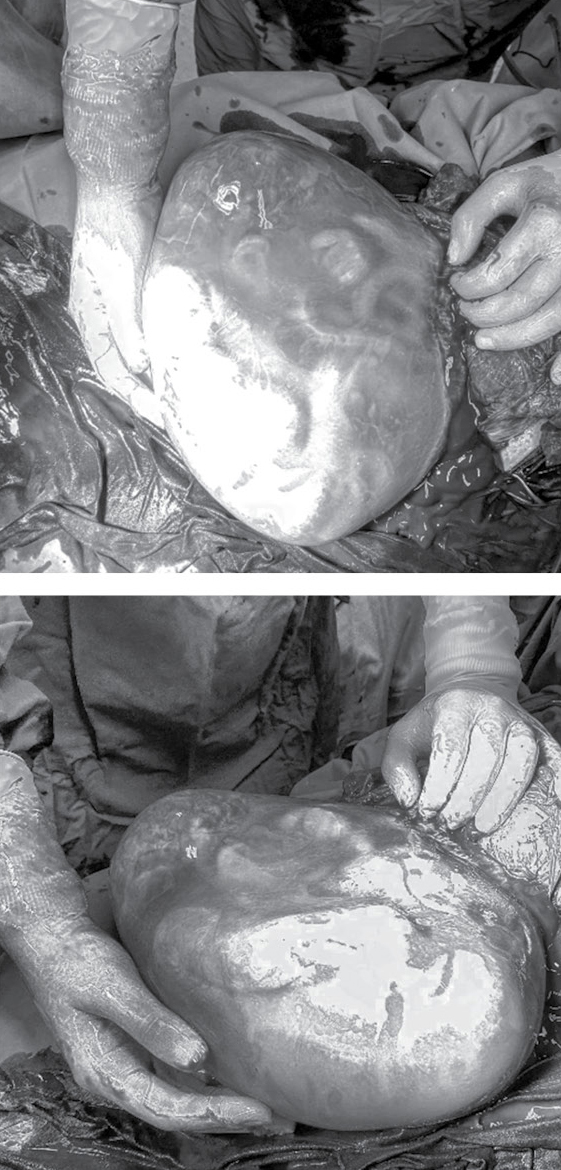Letter to the Editor
HJOG 2021, 20 (2), 109-110 | doi: 10.33574/hjog.0109
Konstantinos Zacharis1, Eirini-Aikaterini Evangelopoulou1, Konstantina Balafa1, Eleni Chrysafopoulou2, Aliki-Rafaella Papazisi3, Ourania Koukoura1
1Department of Obstetrics and Gynecology, University General Hospital of Larissa, Larissa, Greece
2Midwife, Thermopylae Refugee-Immigrant Accommodation Center, National Public Health Organization, Greece
3Undergraduate student, Faculty of Medicine, School of Health Sciences, University of Thessaly, Larissa, Greece
Correspondence: Zacharis Konstantinos, Department of Obstetrics and Gynecology, University Hospital of Larissa, Larissa, Greece, Tel: +30 2413502795, e-mail: zaxarisk@yahoo.com
Dear Editor,
An en caul birth, also known as a “veiled birth” or “mermaid birth”, is when the baby is delivered completely enclosed within the unruptured amniotic sac (caul). There are exceptionally enchanting deliveries and said to be a token of good fortune. This phenomenon actually occurs in less than 1 in 80000 labors, rendering it extremely rare1.
We would like to share with the readers of HJOG the unique snapshot of an en caul delivery of a twin baby during the caesarian section. Our case concerns to a twin pregnancy in a 41-year-old gravida 2 para 1 woman, with a previous cesarian section. She underwent an elective caesarian delivery at 38 weeks of gestational age. During the caesarian section, a female healthy neonate was born first, followed by a male neonate who was delivered through the uterine incision covered in the amniotic membrane with the placenta, en caul (Figure 1). The membrane was intentionally ruptured by the obstetrician who performed the operation and the neonate was gently handed over to the neonatologist.

Figure 1. En caul caesarian delivery in twin pregnancy
Caesarean en caul births compared to vaginal subtype are more common to happen, although exact estimates are hard to ascertain1. The majority of en caul deliveries are associated with prematurity and low gravida2. En caul delivery during caesarean section is considered an easy and effective technique for extremely preterm babies, which protect fetuses from pressure trauma and leads to a smaller uterine injury3.
Throughout history en caul deliveries have been associated with good luck, fame and spiritual or even magical abilities, but evolution of medicine debunked these myths behind en caul births. This phenomenon is so rare that most obstetricians and midwives will never witness an en caul birth during their careers. Without doubt, en caul birth is a beautiful thing to behold. After all, it is said that, when an en caul birth takes place, nature offers a glimpse into a fetus’s sheltered world within the uterus.
References
1. Greenstein J, Panzo W, O’Connor J, et al. “En Caul delivery,” J Emerg Med. 2016; 50(2):333-334. https://doi.org/10.1016/j.jemermed.2015.09.015
2. Murakoshi T. “En Caul” Cesarean Delivery for Extremely Premature Fetuses: Surgical Technique and Anesthetic Options. Surg J (N Y). 2020;6(Suppl 2):S104-S109. Published 2020 Jun 16. doi:10.1055/s-0040-1712927
3. Lin CH, Lin SY, Yang YH, et al. Extremely preterm cesarean delivery “en caul”. Taiwan J Obstet Gynecol. 2010;49(3):254-259. doi:10.1016/S1028-4559(10)60057-5